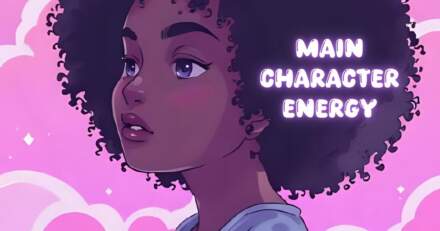Let’s be honest—talking about body image with kids and teens can feel like navigating a minefield of awkwardness, conflicting messages, and social media noise. But body positivity for kids one of the most important conversations we can have.
Art focused around Body positivity for kids and teens gives us a powerful tool to open up these conversations in a visual, affirming, and accessible way. Whether you’re a parent, teacher, counselor, or cool auntie, this post will show you how to use inclusive wall art to plant seeds of confidence, curiosity, and self-worth in the hearts and minds of the next generation.
Why It Matters
We know the stats. By age 13, more than 53% of girls dislike their bodies. Boys aren’t far behind. And with social media introducing edited perfection on every scroll, kids and teens are developing harmful comparisons earlier than ever.
This is where visual representation comes in.
When young people see artwork that reflects bodies like theirs—fat, skinny, tall, short, scarred, freckled, hairy, disabled, transitioning—it disrupts the narrative that there’s one “right” way to look.
“Kids absorb what’s around them. Let’s give them beauty that doesn’t come with shame.”
How Art Opens the Conversation

Unlike lectures or books, art doesn’t tell you what to think—it invites you to feel. That makes it a gentle entry point for bigger topics like:
- Body autonomy
- Diversity and inclusion
- Media literacy
- Consent and boundaries
Use questions like:
- “What do you notice about the people in this art?”
- “Does this remind you of anyone in your life?”
- “What would it feel like to see yourself in a painting like this?”
Best Types of Body Positive Art for Young Viewers

Not all art needs to shout. Here are styles and messages that land well with younger audiences:
1. Diverse Figure Illustrations
Think smiling kids with afros, wheelchairs, vitiligo, hijabs, trans pride tees. These images quietly say, “You are valid.”
2. Playful Affirmation Prints
Quotes like:
- “You are strong, brave, kind, and real”
- “This body is mine and it’s amazing”
- “Different is beautiful”
Use bright colors, bold fonts, or cartoon illustrations.
3. Art Inspired by Heroes
Portraits of body-positive trailblazers: Lizzo, Misty Copeland, Sonya Renee Taylor, and fictional characters that challenge stereotypes.
4. Interactive Posters
Coloring pages, fill-in-the-blank affirmations, or mood trackers with empowering themes.
Where to Hang It (and Why It Matters)
Strategic placement creates subconscious affirmation. Try these spots:
- Bedrooms: Helps reinforce a safe space where their body is welcome
- Bathrooms: Counteracts negative self-talk in the mirror
- Classrooms: Sets a tone of inclusivity from day one
- Playrooms or Rec Spaces: Uses joyful imagery to normalize all bodies
- Therapy or guidance offices: Softens vulnerability and opens dialogue
Art becomes a visual hug—a constant, kind message they can turn to even when words fail.
Teaching Kids to Curate Their Own Spaces

Want to really empower them? Let kids and teens help choose or create the art for their spaces.
- Browse art together from inclusive creators
- Talk about what messages they want to see more of
- Print coloring sheets or quote templates for them to customize. Check out these Kids Positivity Coloring Pages by JLJoyDesigns
“Letting them choose body positive art teaches more than style—it teaches ownership over their space, voice, and story.”
Navigating Tough Questions
Body image isn’t always rainbows. Sometimes kids ask tough questions. Here’s how art can help.
Q: “Why don’t I look like them?” Use art to show all the ways people look. Reinforce that different is not less.
Q: “Why do people say bad things about fat people?” Show celebratory fat art. Talk about unfair stereotypes and why we choose kindness.
Q: “Can I draw myself with a bigger/smaller body?” Yes! Ask what feels good about that drawing and why. Let it lead to a gentle check-in about their emotions.
Final Thoughts
You don’t need a degree in body image psychology to plant seeds of self-love. You just need art that reflects the world as it is—and the world as it should be.
Through prints, posters, quotes, and creative expression, we can raise a generation that isn’t burdened by shame but fueled by acceptance.
Start with one print. One frame. One wall. Let it ripple.
Begin building a more affirming world—one room at a time.












